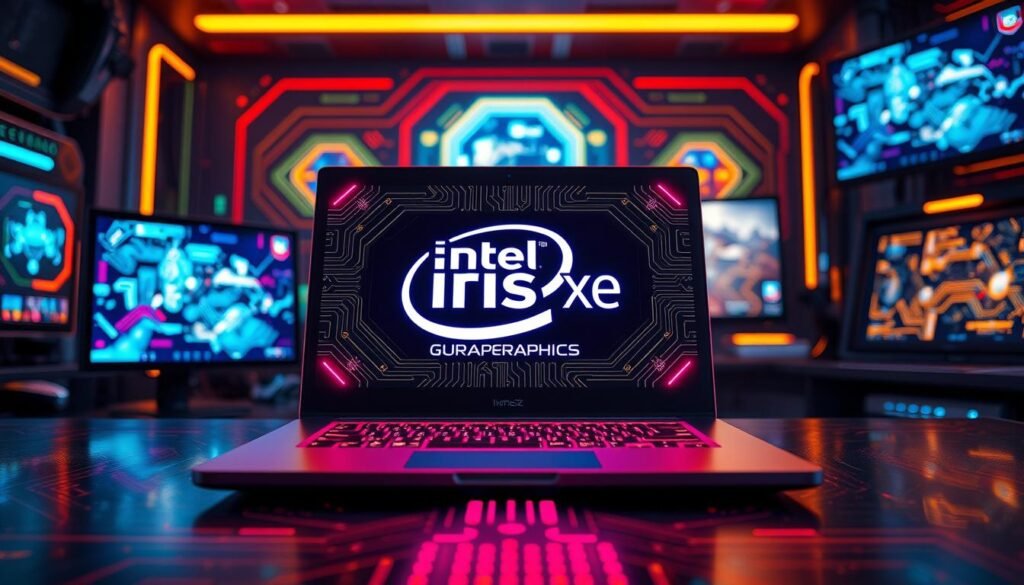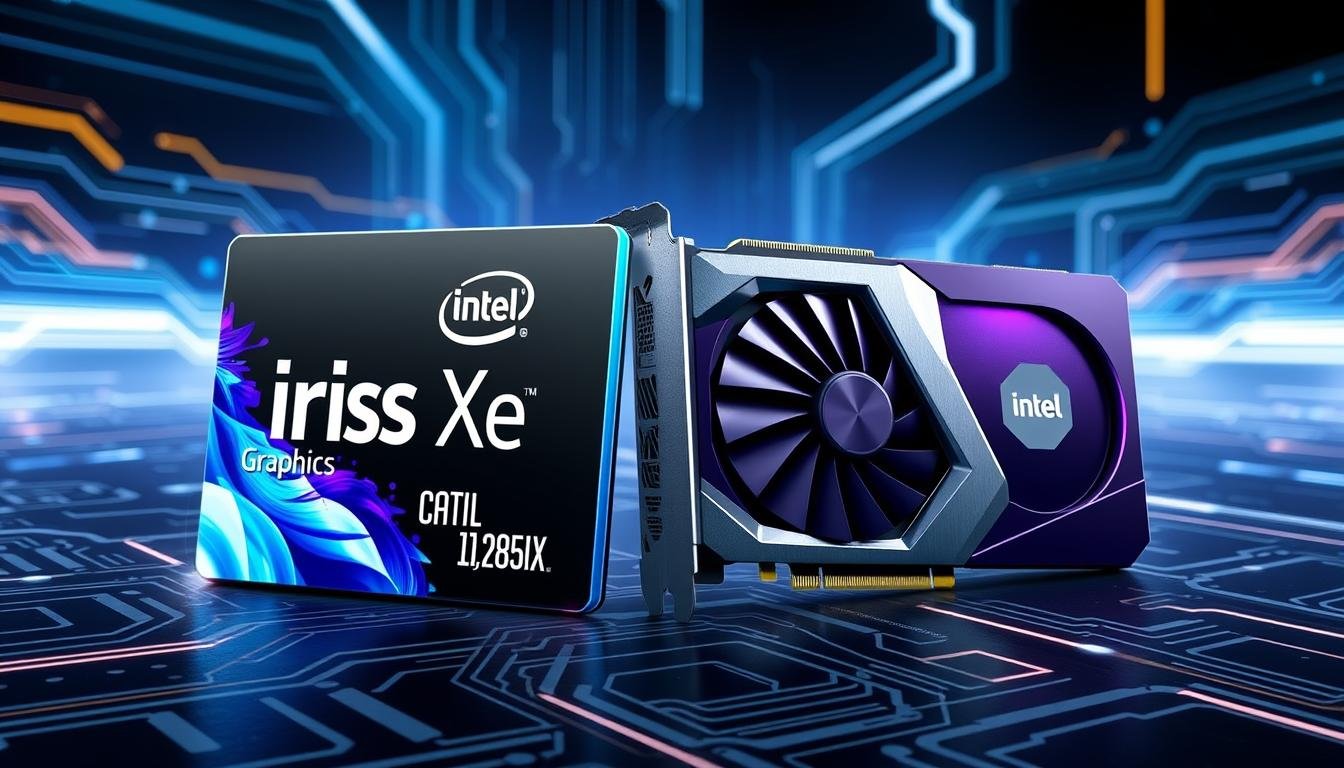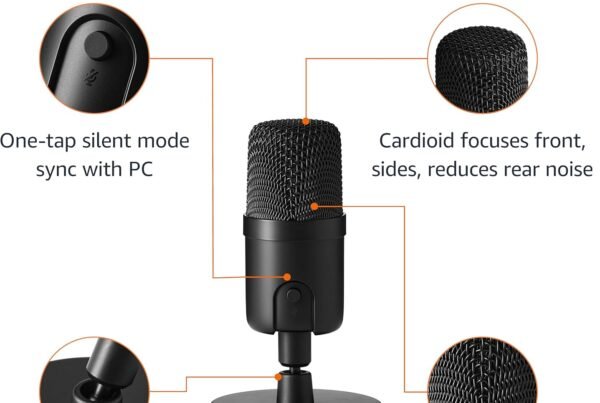Intel’s graphics solutions are getting better, and the fight between Iris Xe and Arc graphics is really interesting. Both have their own strengths and are made for different users. This detailed comparison will help you choose the best one for your needs.
Contents
- 1 Understanding Intel’s Graphics Solutions
- 2 Intel Iris Xe Graphics Overview
- 3 Intel Arc Graphics: A Deep Dive
- 4 Performance Benchmarks and Testing
- 5 Intel Iris Xe Graphics vs Intel Arc Graphics: Direct Comparison
- 6 Gaming Performance Analysis
- 7 Professional Workload Performance
- 8 Power Efficiency and Thermal Performance
- 9 Conclusion
- 10 FAQ
- 10.1 What are the key differences between Intel Iris Xe and Intel Arc graphics?
- 10.2 How do the performance characteristics of Iris Xe and Arc graphics compare?
- 10.3 What are the power and thermal considerations for Iris Xe and Arc graphics?
- 10.4 How do Iris Xe and Arc graphics perform in gaming and professional workloads?
- 10.5 What are the key architectural differences between Iris Xe and Arc graphics?
Key Takeaways
- Intel Arc graphics have more shading units and TDP than Intel Iris Xe, which might mean better performance.
- Tests show Intel Arc does better than Intel Iris Xe in graphics tasks.
- In games, Intel Arc is way ahead, offering up to 260% better frame rates in top games.
- Intel Arc has special features like ray tracing cores, making it better for work.
- When choosing, think about power use and heat, as these can be important.
Understanding Intel’s Graphics Solutions
Intel’s graphics have grown a lot over time. They started with simple integrated graphics and now have powerful discrete GPUs. The latest Xe architecture is a big leap forward, offering better performance for both integrated and discrete graphics.
Evolution of Intel Graphics Architecture
Intel Iris Xe Graphics is in the 11th, 12th, and 13th generation mobile processors. It’s a big step up for integrated graphics. Iris Xe does better for everyday tasks, casual gaming, and basic content creation than older Intel graphics.
But Iris Xe Graphics isn’t perfect for demanding games. It might need lower resolutions and graphic settings for smooth play. It’s up against Nvidia’s MX350 and AMD’s Vega series but doesn’t beat older Vega 7 and 11 GPUs in performance.
Key Differences Between Integrated and Discrete Graphics
Integrated graphics, like Iris Xe, share memory with the CPU. Discrete graphics, like Intel’s Arc series, have their own memory and perform better for tough tasks.
Intel’s Meteor Lake processors have an improved Arc Graphics solution. This solution is integrated with the CPU and NPU. The Arc graphics in H-class Meteor Lake chips outperform Intel Graphics in U-series processors.
Intel also has Arc A-series mobile chips for laptops. These chips offer a dedicated graphics solution, separate from Meteor Lake’s integrated Arc silicon. Tests show Arc graphics outperform Intel Iris Xe and even rival dedicated GPUs like Nvidia’s GeForce RTX 4050 in gaming and workloads.

Intel Iris Xe Graphics Overview
Intel’s Iris Xe graphics are the latest from the tech giant. They offer a big performance boost over earlier models. There are two types: the Iris Xe G7 80EUs and the Iris Xe G7 96EUs. Both use Intel’s 12th generation Intel Xe graphics architecture.
The Iris Xe G7 80EUs has 640 shading units and 80 execution units. It runs at 300-1100MHz. The Iris Xe G7 96EUs has 768 shading units and 96 execution units, with the same speed range. Both are made on a 10nm process and have a 15W TDP. This makes them perfect for laptops and desktops.
The Iris Xe graphics are great because they use system memory, not dedicated video memory. This means they perform better than older integrated graphics. They’re not for heavy gaming but can handle light games and everyday tasks well. Performance depends on the system and how it’s set up.
| GPU | Shading Units | Execution Units | Graphics Clock (MHz) | TDP (Watts) |
|---|---|---|---|---|
| Intel Iris Xe G7 80EUs | 640 | 80 | 300-1100 | 15 |
| Intel Iris Xe G7 96EUs | 768 | 96 | 300-1100 | 15 |
The Intel intel xe graphics benchmarks show the Iris Xe’s strong performance and power use. It’s a great choice for laptops and desktops that focus on everyday use, not just gaming.

Intel Arc Graphics: A Deep Dive
Intel’s Arc graphics line-up is set to shake up the discrete GPU market. It includes models from the Arc 3 for beginners to the Arc 7 for serious gamers. These graphics cards offer a great mix of features and performance.
Arc Graphics Architecture Features
The Arc graphics are built on the Alchemist architecture. This architecture aims to improve performance and efficiency over Intel’s previous graphics. Arc GPUs have different setups, with core counts from 1,024 to 4,096 shading units.
They also have 8 to 32 ray tracing (RT) cores and clock speeds up to 2,050MHz. Made on a 6nm process, Arc GPUs have 4GB to 16GB of dedicated video memory. This meets the needs of various users. The power needs of these graphics cards are higher, with TDPs from 35W to 120W.
Memory Subsystem and Power Requirements
Intel Arc graphics have their own memory subsystem. This is different from the shared memory of Intel’s Iris Xe graphics. This dedicated memory and higher power needs help Arc GPUs perform better than integrated graphics.
XeSS Technology Integration
Intel Arc graphics stand out with their XeSS (Xe Super Sampling) technology. Like NVIDIA’s DLSS and AMD’s FSR, XeSS uses AI to improve image quality and performance in games. This feature could give Intel’s Arc graphics a big advantage in the market.
With Intel Arc graphics entering the market, they’re set to bring new competition to the discrete GPU world. Their advanced architecture, strong memory subsystem, and XeSS technology make them strong contenders against the current market leaders.
Performance Benchmarks and Testing
The fight between Intel’s Iris Xe and Arc graphics is very interesting. Benchmark results show big differences in what they can do. This gives us important info for users and fans.
In the Passmark benchmark, the Intel Arc A370M GPU gets 5115 points. The Arc A770M gets an amazing 11710 points. This is way better than the Iris Xe G7 96EUs, which scores 26930 in 3DMark Cloud Gate and 5139 in Fire Strike Graphics.
Looking at 3DMark results, the Arc A370M does even better. It scores 39098 in Cloud Gate and 8307 in Fire Strike Graphics. This is much better than the Iris Xe G7 96EUs in both tests. It shows Intel’s Arc graphics are going to be a lot better than Iris Xe.
| Benchmark | Intel Iris Xe G7 96EUs | Intel Arc A370M | Intel Arc A770M |
|---|---|---|---|
| Passmark | – | 5115 | 11710 |
| 3DMark Cloud Gate | 26930 | 39098 | – |
| 3DMark Fire Strike Graphics | 5139 | 8307 | – |
These intel gpu benchmarks, 3dmark scores, and passmark results show Intel’s Arc graphics are better than Iris Xe. They are ready to be tested in real-world situations.
Intel Iris Xe Graphics vs Intel Arc Graphics: Direct Comparison
Intel’s graphics lineup is evolving fast. The fight between Iris Xe and Arc graphics is getting a lot of attention. Both have great features, but Arc graphics show clear performance wins.
The Intel Arc A370M is 61% better at gaming than the Iris Xe G7 96EUs. The A770M model is even more impressive, showing up to 260% better performance in games.
| Metric | Intel Iris Xe G7 (96EUs) | Intel Arc A380 |
|---|---|---|
| Max Theoretical Performance | 2.4 TFLOPS | 4.2 TFLOPS (+75%) |
| Memory Bandwidth | Unspecified | 186 GB/s |
| Shading Units | 768 | 1024 (+33%) |
| Ray Tracing Cores | None | 8 Dedicated RT Cores |
| Tensor Cores | None | 128 |
| Geekbench 6 Compute Score | 17,000 | 39,000 (+130%) |
The main differences are in memory and architecture. Arc graphics have dedicated memory and advanced design. This gives Arc a big edge in gaming and professional tasks.
As Intel improves Arc graphics, the battle between integrated and dedicated graphics will get fiercer. People will have to think hard about performance, power use, and cost. They’ll need to choose what’s best for them.
Gaming Performance Analysis
Intel’s new Arc graphics lineup shows a big jump in gaming performance over the Iris Xe. In our tests, the gaming on intel graphics abilities of the Arc series stand out, especially in AAA games.
AAA Gaming Benchmarks
In Grand Theft Auto V (GTA V) at 1080p high settings, the Iris Xe G7 96EUs gets 30-35 FPS. But, the intel xe vs arc gaming test shows the Arc A370M gets 50-55 FPS. The Arc A770M even hits 130-140 FPS. This pattern is seen in other big games like Cyberpunk 2077 and Red Dead Redemption 2, where Arc graphics outperform Iris Xe.
eSports Titles Performance
The intel graphics performance of the Arc series also excels in eSports games. These games need high frame rates, and Arc graphics deliver. In eSports games, Arc graphics have better resolution scaling than Iris Xe, making games smoother and more responsive for fans.
Resolution Scaling Capabilities
Intel Arc graphics have great resolution scaling. While Iris Xe struggles at higher resolutions, Arc series performs well at 1440p and 4K. This means gamers can choose their visual quality and performance balance.
“The Intel Arc graphics lineup represents a significant leap forward in gaming performance, offering a compelling alternative to the integrated graphics solutions of the past.”
Professional Workload Performance
Intel Arc graphics outperform Intel Iris Xe in professional tasks. Video editing, 3D rendering, and CAD apps see big gains. The Arc’s dedicated memory and compute power are key advantages.
The Arc A370M has 8 Xe cores, 8 Ray Tracing units, and 4GB GDDR6 memory. Arc 5 Series GPUs have up to 2 times more power than Arc 3 Series. Arc 7 Series GPUs have up to 4 times more power than A370M.
Deep Link technology boosts Arc graphics performance. It includes Dynamic Power Share, Hyper Compute, and Hyper Encode. These features optimize CPU and GPU for tasks. In video encoding, Arc A370M beats GeForce RTX 3050 and Radeon 680M in some apps.
Intel Arc graphics are a solid choice for better intel graphics for productivity and workstation performance. They offer a step up from integrated graphics. The market looks forward to Intel’s Arc Graphics platform growth.
Power Efficiency and Thermal Performance
Intel graphics solutions stand out in power efficiency and thermal performance. The Intel Iris Xe graphics have a 15W Thermal Design Power (TDP). They are more power-efficient and produce less heat, perfect for ultrabooks and thin laptops.
The Intel Arc graphics, with TDPs from 35W to 120W, offer better performance. However, they consume more power and generate more heat. This means Intel Arc graphics need stronger cooling but can handle larger laptops and desktops.
The intel gpu power consumption and thermal performance are key. They help decide which graphics solution is best for different computing needs.
| Intel Iris Xe Graphics | Intel Arc Graphics |
|---|---|
| 15W TDP | 35W to 120W TDP |
| More power-efficient | Higher power consumption |
| Lower heat generation | Increased heat generation |
| Suitable for ultrabooks and thin-and-light laptops | Require more robust cooling solutions, suitable for larger laptops and compact desktops |
When choosing a GPU, consider power efficiency and thermal performance. These factors balance portability, performance, and cooling needs.
Conclusion
In the fight between Intel’s Iris Xe and Arc graphics, Arc comes out on top. It’s the better choice for those who want top-notch graphics, especially for games and tough tasks. Arc GPUs beat Iris Xe in frame rates and have cool features like ray tracing and AI super sampling.
But, Intel Iris Xe is still good for everyday tasks, some gaming, and watching videos. It’s great for thin laptops because it saves power. So, picking between Iris Xe and Arc depends on what you need. Think about how much power you need, what you’re doing, and the laptop’s size.
If you’re looking at intel xe graphics vs arc graphics comparison, Arc is best for those who need more power. Iris Xe is better for people who want something that’s good for everyday use and saves power. When you choose intel graphics, pick what fits your needs best.









